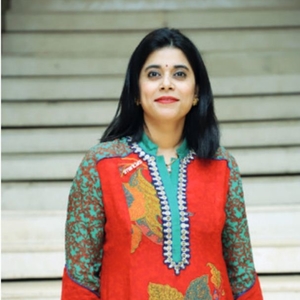 India is one of the world's largest education markets. Not only do we educate and train millions of our students, but we also export and import education through students who go out to study and students who come into the country to study in some of our top institutions. However, this is limited to what is called the top of the pyramid. For the broader market, challenges in basic education still remain.
India is one of the world's largest education markets. Not only do we educate and train millions of our students, but we also export and import education through students who go out to study and students who come into the country to study in some of our top institutions. However, this is limited to what is called the top of the pyramid. For the broader market, challenges in basic education still remain.
We are also one of the most under-served countries as far as education goes. Population size, the low base of education and geography has played a major role in the limitations in this sector. The situation could have been dire had it not been for the technological revolution in education and the onset of the internet. Thanks to the IT revolution, education has crossed limitations of geography, language of instruction, content, teaching, cost and tuition and reference material.
The truly great leap has been provided by smart classes, where digitisation of course material, new course modules, visual templates and teaching methodologies has proved to be transformational for students, and also teachers. Millennia old rote learning was transformed to a more engaging, individualised and scientific way of transferring knowledge. No wonder the smart class revolution continues to be the bedrock of education today largely because is an initiative that truly caters to the needs of education today and help students prepare for what awaits them in the future.
While the present school curriculum is outdated and is more focussed on cramming and theoretical learning, technical education in top universities is based more on problem solving skills. When a student shifts from school to college, there is a paradigm shift in the way of learning, and this shift makes it very difficult to cope with. Digital learning aims to bridge this enormous gap. With its innovative learning techniques, smart class provides a better understanding and helps in concept clarity right before a student is ready to transition to college education.
The job market is ever changing with fresh requirements every day. With the evolving market, one needs to evolve too, and problem-solving skills come handy. Computational learning and innovative thinking prepare a smart class student for a career that is both challenging and demanding. Irrespective of the discipline one chooses for higher education; science, technology, engineering and maths are the four pillars that prepare students to pursue excellence in their discipline of choice. Every branch of education rests on these pillars, a basic knowledge of science and math is a valid requirement for every professional. New innovations like smart STEM, a product of CTI labs, has paved a way for students to learn these subjects with ease. With both 2D and 3D simulations, smart STEM deconstructs complex topics into easy-to-understand concepts. It ensures higher retention levels by using experiential learning simulations, vivid imagery and glossaries.
Smart education and digital learning are the tools that will provide our country the much-needed propulsion required to make the next big leap. Digital learning, innovative thinking and problem solving should be integrated into our school curriculum. Not only will it make our students college ready but industry ready too. New innovative teaching software technologies provide a number of platforms for schools to seamlessly imbibe computational thinking, innovation and digital learning into the school curriculum. Services such as Smart STEM, CTI lab and Robotics and Language lab provide an environment to students where they can learn by experimenting, discovering, thinking and collaborating.
Divya Lal
With over 18 years of experience, currently working as the Managing Director of Ebix Smartclass Educational Services, Divya is a seasoned education industry leader with experience in creative innovative school solutions, building and managing the relationship with schools, academic support, training, and operations. She leads a team of more than 1000 people, managing over 5000 schools and impacting over 2.5 million students. Divya is passionate about creating 21st-century Future Ready Schools and bridging the digital divide. She believes the purpose of educational technology is not only to utilize existing tools to augment learning but to apply scientific knowledge and advances in learning theory to the application of assistive devices in the classroom. She feels fortunate to be working in the field of education as it has given her a chance to contribute towards building the future of the country.